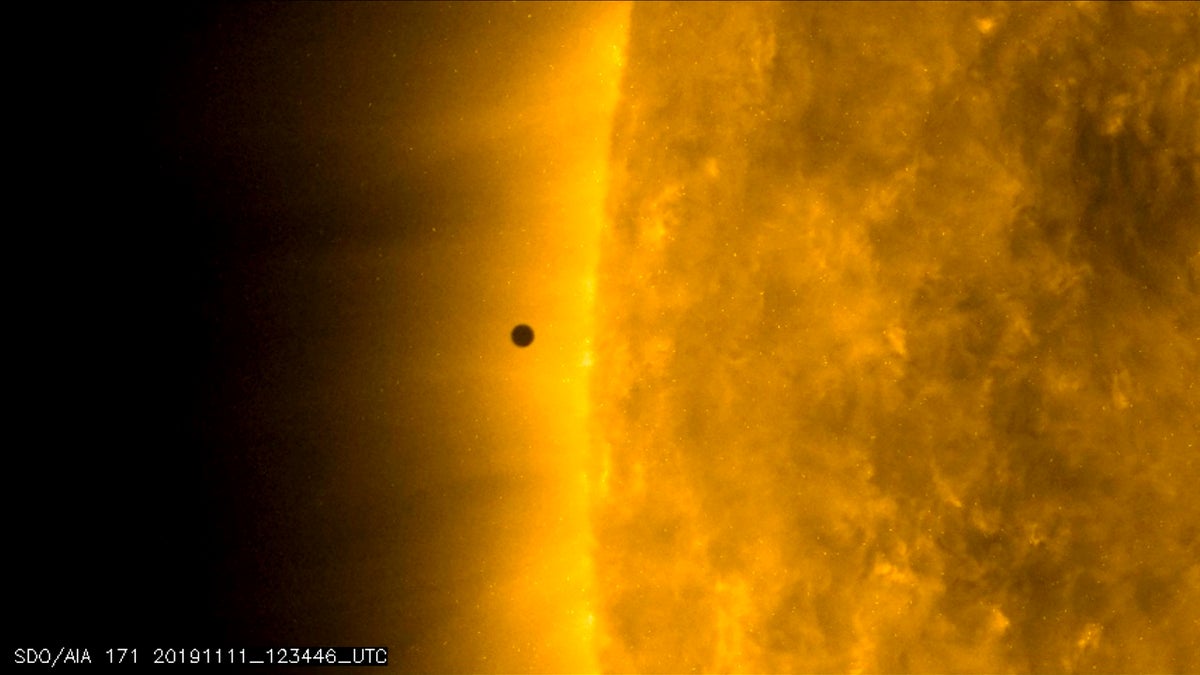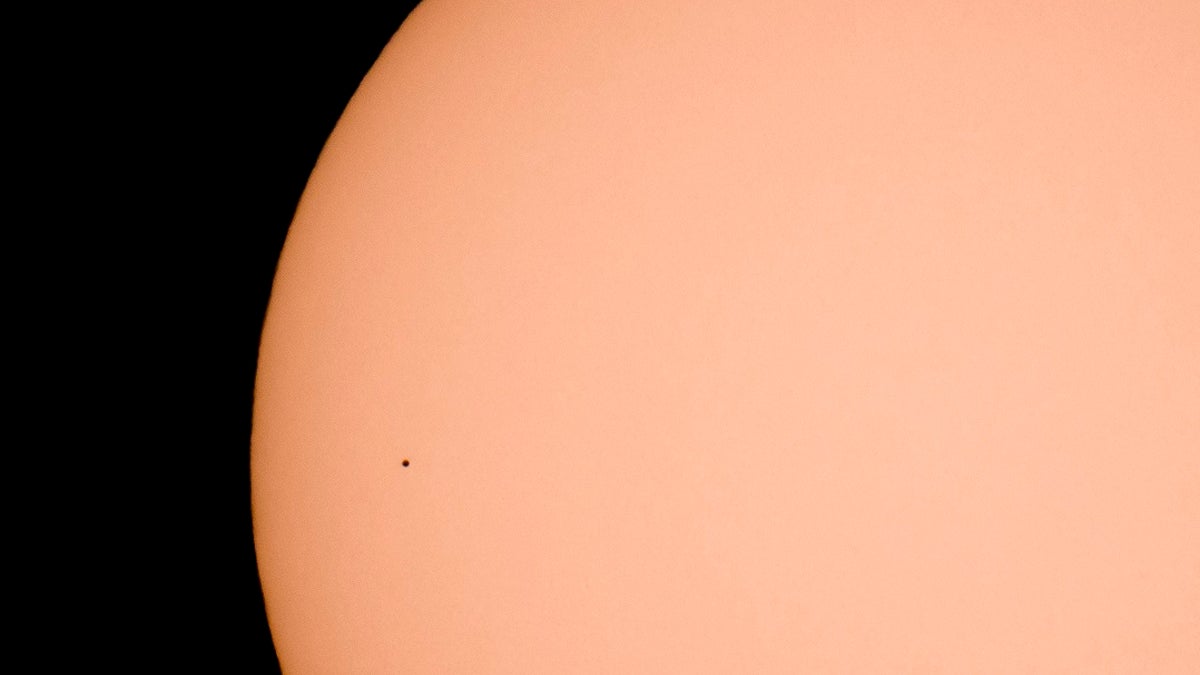Fox News Flash top headlines for Nov. 11
Fox News Flash top headlines for Nov. 11 are here. Check out what's clicking on Foxnews.com
Mercury had a rare celestial occurrence Monday, as stargazers saw the planet -- in the form of a small black dot -- pass between the sun and Earth.
The event, known as the Mercury Transit, began about 7:35 a.m. and lasted more than five hours. The solar system's smallest planet is also the closest to the sun.
The East Coast, Canada, South and Central America got to see the whole show, weather permitting.
MOON AND MERCURY MAY HAVE THICK DEPOSITS OF ICE, STUDY SUGGESTS

This still image from video issued by NASA's Solar Dynamics Observatory shows Mercury as it passes between Earth and the sun on Monday. The solar system's smallest, innermost planet resembles a tiny black dot during the transit, which began at 7:35 a.m. EST (1205 UTC). (NASA Solar Dynamics Observatory via AP)
"The planet currently looks like a tiny, traveling blemish on the sun's face as it passes in front of the sun," Space.com reported.
Most of the world caught only a small sliver of the transit. Observers in Asia and Australia were not able to see it.
In Maryland, clouds prevented NASA solar astrophysicist Alex Young from getting a clear peek.

The planet Mercury transits across the face of the Sun, as seen from Kekesteto, Hungary's highest mountain peak on Monday. Stargazers used solar filtered binoculars and telescopes to spot Mercury, the solar system's smallest, innermost planet, as a tiny black dot as it passed between Earth and the sun on Monday. (Peter Komka/MTI via AP)
“It’s a bummer, but the whole event was still great,” Young wrote in an email to The Associated Press. “Both getting to see it from space and sharing it with people all over the country and world.”
NASA's orbiting Solar Dynamics Observatory provided live coverage of the event.
Nasa tweeted photos of the transit, including one of Mercury crossing the sun behind the Washington Monument, the planet barely visible.
CLICK HERE TO GET THE FOX NEWS APP
The event only happens 13 times per century, according to NASA. The last transit that was visible from Earth was in 2016.
The next one is scheduled to occur in 2032, but won't be visible from North America, which can view the next one in 2049.
The Associated Press contributed to this report.





















